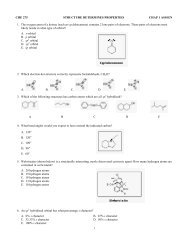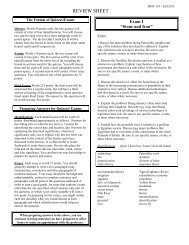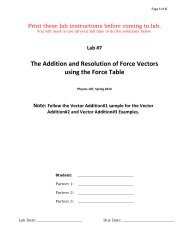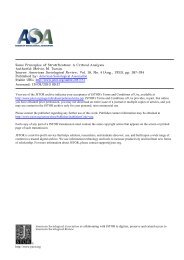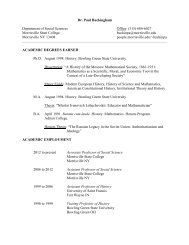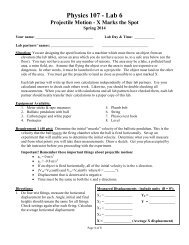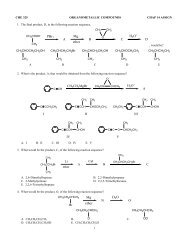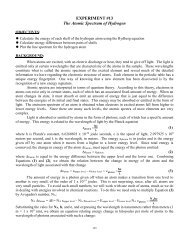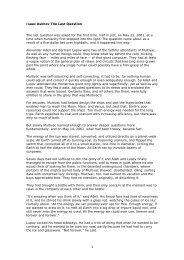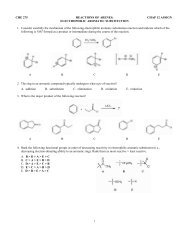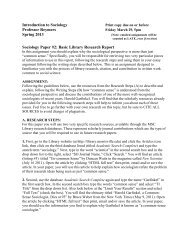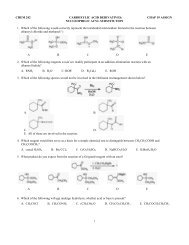CHEM 121L ACID/BASE II
CHEM 121L ACID/BASE II
CHEM 121L ACID/BASE II
- No tags were found...
Create successful ePaper yourself
Turn your PDF publications into a flip-book with our unique Google optimized e-Paper software.
EXPERIMENT #9STANDARDIZATION OF NaOHTo perform the standardization, a solution of sodium hydroxide is placed in a buret, and aknown mass of KHP is placed in an Erlenmeyer flask and dissolved in water. The basic solution isadded to the flask until the KHP has been consumed. This point -- the end point -- can be determinedby the change in color of an indicator placed in the flask at the start of the titration. Indicators aresubstances that undergo specific color changes under certain conditions in solution. An indicator thatworks very well in this experiment is phenolphthalein. Phenolphthalein the active ingredient inEXLAX is colorless until the KHP is consumed. The slightest excess of sodium hydroxide turnsthe indicator pink. The end point is observed as the first faintest pink color that persists for 30 seconds.At the end point the known quantity of KHP is stoichiometrically equivalent to the sodium hydroxidedelivered by the buret.The balanced equation for the reaction of sodium hydroxide with KHP isKHP(aq) + NaOH(aq) NaKP(aq) + HOH(l) (1)Since one mole of KHP has one mole of acidic protons and one mole of NaOH has one mole ofhydroxide ions, the coefficients of each reactant in equation (1) are the same. In other words one moleof KHP is stoichiometrically equivalent to one mole of NaOH. Therefore, at the endpoint of thetitration,moles KHP = moles NaOH (2)The KHP was weighed out, somass KHPmole KHP (3)molar mass KHPSince the sodium hydroxide was measured volumetrically,Substituting (3) and (4) into (2), we getmole NaOH = MolarityNaOH x VolumeNaOH (4)mass KHP= MolarityNaOH x VolumeNaOH (5)molar mass KHPRearranging to solve for the concentration of sodium hydroxide, we getmass KHPxmolar mass KHP1VolumeNaOH Molarity(6)NaOHThus, the molarity of the sodium hydroxide solution is equal to the mass of KHP divided by theproduct of the molar mass of KHP and the volume of sodium hydroxide solution used to reach the endpoint. Remember that volume has units of liters and molarity has units of moles per liter.Perform at least three titrations to standardize the sodium hydroxide solution, but do as many asit takes to get a relative standard deviation (rsd) of less than 5 ppt. [Check with your instructor.]94



